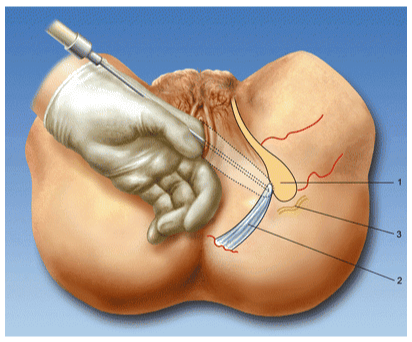Summary
Summary ( 15 Questions)
A nurse is caring for a client who is receiving pudendal block anesthesia for a vaginal delivery.
Which of the following outcomes should the nurse expect?
a pudendal nerve block is a form of local anesthesia that blocks the pudendal nerve, which innervates the perineum, vulva, and vagina. A pudendal nerve block is commonly used to relieve pain during the delivery of baby by forceps, vaginal repairs, and anorectal surgeries.
a pudendal nerve block does not relieve pain during uterine contractions. The pudendal nerve does not supply the uterus, which is mainly innervated by the sympathetic and parasympathetic nerves.
a pudendal nerve block does not reduce motor function in the lower extremities. The pudendal nerve does not innervate the muscles of the legs, which are mainly supplied by the femoral, sciatic, and tibial nerves.
pudendal nerve block does not increase the risk of postpartum hemorrhage.
A pudendal nerve block does not affect the blood vessels or the coagulation system.
Postpartum hemorrhage is usually caused by uterine atony, trauma, retained placenta, or coagulopathy.
a pudendal nerve block is a form of local anesthesia that blocks the pudendal nerve, which innervates the perineum, vulva, and vagina. A pudendal nerve block is commonly used to relieve pain during the delivery of baby by forceps, vaginal repairs, and anorectal surgeries.

